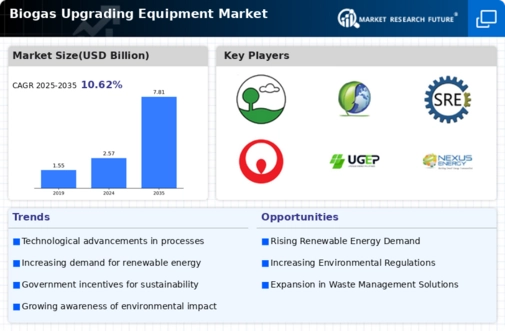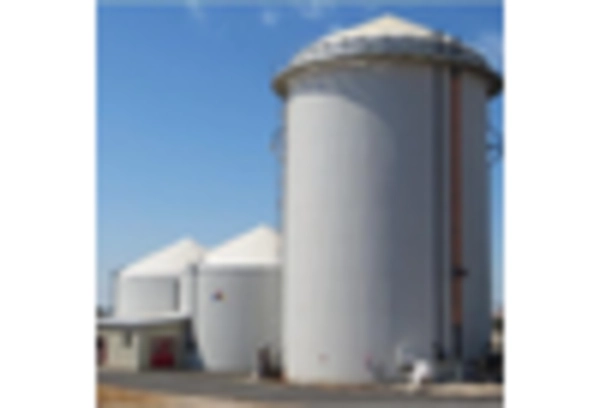Government Incentives and Policies
Government incentives and supportive policies play a crucial role in shaping the Biogas Upgrading Equipment Market. Many countries have implemented favorable regulations and financial incentives to promote renewable energy technologies, including biogas. For instance, feed-in tariffs and tax credits for biogas production encourage investments in upgrading equipment. According to the U.S. Department of Energy, the biogas sector has seen substantial growth due to such initiatives, with a projected increase in biogas facilities. These policies not only stimulate market growth but also create a conducive environment for innovation in biogas upgrading technologies, thereby enhancing the overall market dynamics.
Increasing Demand for Renewable Energy
The rising demand for renewable energy sources is a pivotal driver for the Biogas Upgrading Equipment Market. As nations strive to reduce their carbon footprints, biogas emerges as a viable alternative to fossil fuels. The International Energy Agency indicates that biogas production could potentially reach 1,000 terawatt-hours by 2030, underscoring the growing interest in this sector. This demand is further fueled by the need for energy security and diversification of energy sources. Consequently, investments in biogas upgrading technologies are likely to surge, as stakeholders seek efficient methods to convert raw biogas into high-quality biomethane. This trend not only supports energy transition goals but also enhances the market landscape for biogas upgrading equipment.
Growing Awareness of Environmental Benefits
The increasing awareness of environmental benefits associated with biogas utilization is a significant driver for the Biogas Upgrading Equipment Market. Stakeholders, including consumers and businesses, are becoming more conscious of the impact of waste management and energy production on the environment. Biogas upgrading not only reduces greenhouse gas emissions but also contributes to waste reduction by converting organic waste into valuable energy. Reports suggest that biogas can reduce CO2 emissions by up to 80% compared to fossil fuels. This heightened awareness is likely to drive demand for biogas upgrading technologies, as more entities seek sustainable solutions to meet their energy needs.
Rising Investment in Waste-to-Energy Projects
The surge in investment in waste-to-energy projects is propelling the Biogas Upgrading Equipment Market forward. As municipalities and private entities seek to address waste management challenges, biogas production from organic waste is gaining traction. The global waste-to-energy market is projected to grow significantly, with biogas being a key component of this growth. Investments in infrastructure and technology for biogas upgrading are expected to increase, as stakeholders recognize the dual benefits of waste reduction and energy generation. This trend not only enhances the market potential for biogas upgrading equipment but also aligns with broader sustainability goals.
Technological Innovations in Upgrading Processes
Technological innovations are transforming the Biogas Upgrading Equipment Market, leading to more efficient and cost-effective solutions. Advances in membrane separation, pressure swing adsorption, and chemical absorption technologies are enhancing the upgrading process, making it more accessible for various applications. The market is witnessing a shift towards modular and scalable systems that can be tailored to specific needs. As a result, the efficiency of biogas upgrading is improving, with some technologies achieving over 99% methane purity. This evolution not only attracts new players into the market but also encourages existing companies to invest in research and development, thereby fostering a competitive landscape.

















Leave a Comment